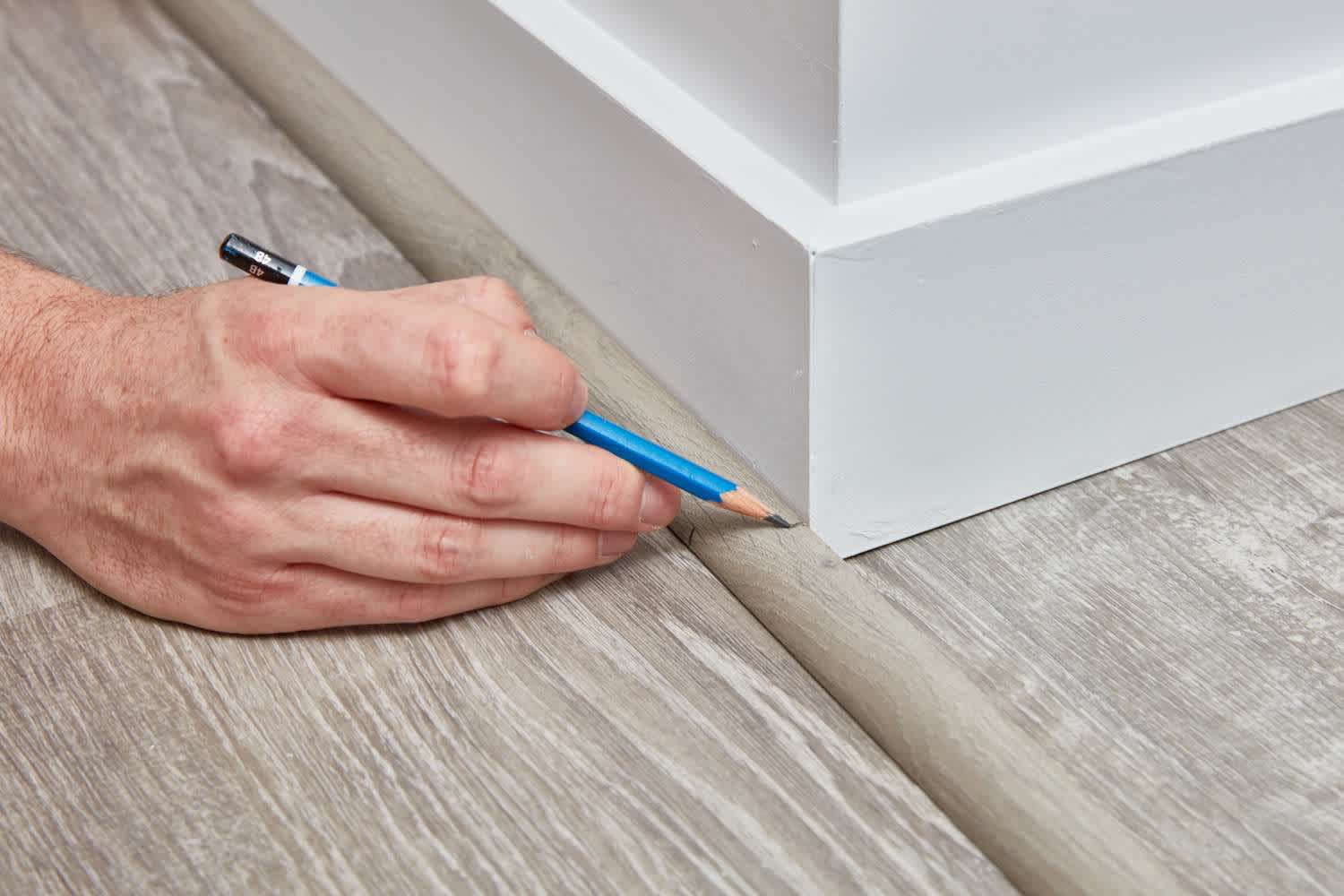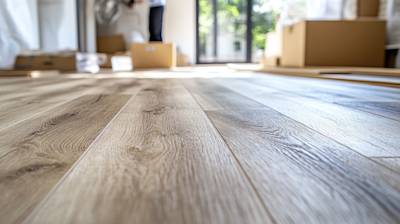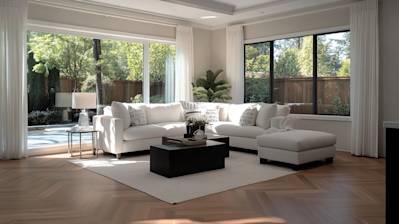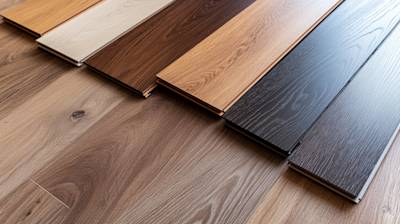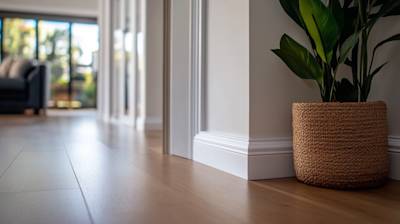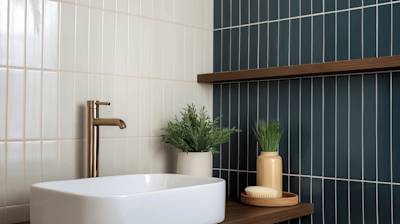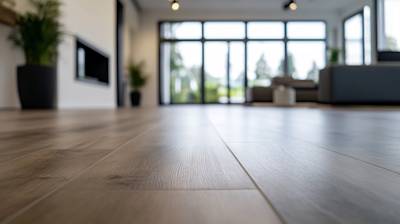You might not have ever given a second thought to the slim, unassuming fixture that sits at the juncture of your wall and the floor. It tidy ups the edges and brings a finished touch to the room. This finishing carpentry piece is none other than shoe molding, and it plays a crucial role in solving aesthetic and practical concerns in your house. Through this comprehensive guide, we will uncover the many facets of shoe molding, its uses, varieties, installation methods, and much more.
The Basics of Shoe Molding
Shoe molding is a decorative trim piece that covers the gap between the bottom of the baseboard and your flooring. This molding serves multiple functions, such as lending aesthetic appeal, hiding uneven gaps, and even preventing dust and debris from collecting in corners. It’s often mistaken for quarter round molding, but they have their differences in shape and size.
Difference Between Shoe Molding and Quarter Round Molding
It's easy to mix up quarter round and shoe molding due to their similar form and use. Nevertheless, there are some differences:
- Shape and Size: Quarter round molding has a 90° angle whereas shoe molding is a bit narrower and less rounded.
- Flexibility: Shoe molding is more flexible and hugs the floor accurately, which shows vital if your floor isn't perfectly level.
- Aesthetics: Shoe molding appears more subtle and less bulky compared to quarter round molding- this could affect your overall aesthetic.
Materials Used in Shoe Molding
Shoe moldings are available in several materials, each with its unique properties:
- Wood: Traditional molding material that can be easily cut and installed.
- MDF: Medium Density Fibreboard is a cheaper alternative to wood but is not suitable for high moisture areas as it swells when wet.
- PVC: Extremely durable and resistant to moisture and insects. It also requires zero maintenance.
- Polystyrene and Polyurethane: Cost-effective materials that are easy to work with and resistant to moisture and insects.
Installation of Shoe Molding
Installation does require some carpentry skills but is manageable with the right tools and guidance. Here are the steps:
- Measurement: Measure the length of the wall where you want to install the shoe molding.
- Cut the Molding: Cut the molding to the appropriate length using a miter saw.
- Fit: Place the molding against the wall and floor. Ensure that it fits perfectly and composes a right angle with the wall.
- Nail it: Gently nail it after spacing the molding accurately.
- Caulk: Apply a bead of caulk to fill any gaps and then paint it accordingly.
Expert tips for nailing shoe molding installation
- Always measure twice before cutting
- If you're working around a corner, you'll need to create a mitered cut
- The shoe molding should always be nailed into the baseboard, not the floor
- Consider pre-painting or staining the shoe molding before installation
The Benefits of Shoe Molding
While shoe molding has a principally decorative role, it confers numerous other benefits:
- Hiding Imperfections: Shoe molding forms a neat barrier that can conceal any unsightly spaces or gaps.
- Protection: It acts as a protective barrier, preventing damage from mops or vacuum cleaners hitting the baseboards.
- Versatility: Shoe molding can be installed against curved or wavy floors where baseboards alone might not suffice.
- Aesthetic Enhancement: Shoe molding adds an extra dash of elegance and finishes your room decor.
Frequently Asked Questions about Shoe Molding
How should shoe molding be installed?
Installing shoe molding involves measuring, cutting, sanding, and attaching the molding to the baseboards with nails. Precise measuring and accurate cutting are fundamental in this process. Shoe molding should be cut in 45-degree angles at the corners for a seamless fit. It's often attached using a pneumatic nail gun but can also be manually nailed in employing a hammer.
How to cut shoe molding?
Cutting shoe molding is not as complicated as one might think. Using a manually operated miter box or a power miter saw, the cuts need to be measured accurately and executed on a 45-degree angle – in a scarf, coped, or mitered cut according to the joined location. Safety gears, such as goggles and gloves, are necessary during this process.
Can you use shoe molding on carpet?
Yes, shoe molding can be used on carpet but it isn’t as common due to the flexibility of carpet to meet the baseboards. The use of shoe molding on a carpet is often a matter of personal aesthetics. Some people prefer the refined look it offers while others think it's superfluous.
Is shoe molding the same as quarter round?
While both are installed at the point where the baseboard meets the floor, shoe molding and quarter round differ in size and shape. Quarter round has a 90-degree angle cut out of a full round, resulting in a quarter-circle profile. In contrast, shoe molding has a less pronounced curve and is generally thinner and wider.
Is shoe molding outdated?
Shoe molding certainly isn't outdated! It continues to be an integral part of interior house designs, adding a polished finish to rooms. Current color trends dictate that the molding should preferably match the baseboard color, creating a unified look.
Should shoe molding match the floor or baseboard?
Whether shoe molding should match the floor or baseboards is generally a matter of preference. Today’s design trend leans towards having the shoe molding match the baseboards. This creates a continuous, smooth line and makes the room appear larger.
Can I replace shoe molding without removing baseboards?
Absolutely! Shoe moldings are attached separately to the baseboards, which means they can be replaced without disturbing the existing baseboards. The process involves carefully prying the old shoe molding away from the baseboards, taking care to avoid damaging the baseboards or the wall.
What size nails for shoe molding?
The ideal nail size for shoe molding is typically a 4d (1-1/2 inch) finish nail, which is small enough to fit through the shoe molding without splitting it and long enough to secure it to the baseboard.
Pros of Shoe Molding
Versatility
Shoe molding is extremely versatile and can fit almost any situation. Its primary purpose is to cover the gap between the baseboard and the flooring, but it can also be used to hide imperfections in a room when installed correctly. It's especially useful in older homes that might have seen some shift or settling over the years.
Aesthetics
Shoe molding can significantly enhance the aesthetics of a room. The molding not only conceals unsightly gaps and spaces but also adds an elegant finishing touch to a room. It creates a seamless transition between the different elements, such as the wall and floor. Available in various styles and designs, you can choose shoe molding that best suits your home's motif or theme.
Installation
Installing shoe molding isn't overly complex. With a little patience and DIY spirit, this project can be accomplished over a weekend. Contractor costs can rack up quickly, so being able to do this yourself is a definite plus. There are plenty of resources available, online and in print, to help guide you through the process.
Reduces Maintenance
Shoe molding can also help to reduce routine maintenance. By sealing the gap between the baseboard and the floor, dust, dirt, and other debris are less likely to build up in those areas. This means less frequent cleaning and maintenance, saving you time and effort.
Flexibility
Another pro of shoe molding is its flexibility. Unlike the baseboard, shoe molding can bend to follow the contours of the floor. This quality is useful when dealing with uneven or warped floors, ensuring that the molding will lie flat.
Cons of Shoe Molding
Installation Difficulty
While shoe molding installation is relatively straightforward, it still requires some level of DIY know-how. You'll need the right tools, including a miter saw for cutting the molding correctly, as well as a nail gun or hammer for securing it in place. If you're not comfortable with these tools, the project can become a little more demanding.
Potential for Damage
Shoe molding is typically made of softwoods like pine or fir, meaning it can easily get damaged. Nails can split the wood if not carefully installed, and impacts from vacuum cleaners or other household items can also cause dings or dents.
Time-Consuming
Like any home improvement project, installing shoe molding can be time-consuming. Cutting and nailing it to size, particularly in a larger room or multiple rooms, can take quite a bit of time. While this isn't necessarily a con for everyone, it is something to keep in mind.
Limited Selection
Compared to other types of molding, like crown or chair rail, the selection of shoe molding is relatively limited. While you can find different styles and finishes, the overall profile and size options are not as varied.
Maintenance
Even though shoe molding can reduce routine maintenance, it still requires some upkeep. It might need repainting or staining over time, particularly if it's made of wood. Damage might also need repairing or the molding might need replacing entirely. Although these tasks are not overly complex, they do further emphasize the need for some level of DIY comfort.
Affects Room Proportions
Shoe molding can visually affect the proportions of a room. In rooms with lower ceilings or smaller square footage, adding shoe molding could make the room appear slightly smaller. While this effect might not be noticeable to everyone, those with a keen eye for design might view it as a con.
Summary
In the world of interior decoration and refurbishment, shoe molding can make a world of difference with its understated charm. This essential finishing touch safeguards your walls from potential damage while concealing cracks and gaps that hound the junction of walls and floors. It comes in a variety of shapes and sizes catering to diverse aesthetic tastes and can also be a DIY project if you're handy with a few basic tools.
You may not realize it but shoe molding is always around you. It subtly gathers the visual elements of your home, making it less about harsh lines and more about seamless beauty. Especially when painted or stained to match the floor or furniture, it helps to create a cohesive look, thereby enabling rooms to look well-defined and visually appealing.
So, next time when you plan on upgrading your home’s interior, remember to consider shoe molding. It’s often overlooked but trust me, it is one add-on that can jazz up your home’s appearance, adding both utility and sophistication. Along with being an amazing functional element that protects your walls and floors, it provides an artistic flair subtly satisfying your aesthetic sensibilities. It's simple, really - for a well-finished and complete room, shoe moldings are the way to go.
About Solid Construction & Design
Solid Construction & Design is your friendly and reliable construction partner based right here in Sacramento, CA. We're known for our dedication to quality, our eye for detail, and for our unwavering commitment to our clients. We bring together decades of experience to offer you custom, efficient solutions for all your construction and design needs. From beautiful kitchen remodels to expansive new home construction projects, we've got you covered. We're not just building structures, we're crafting your dreams into reality. So, why wait? Join the Solid Construction and Design family today!

